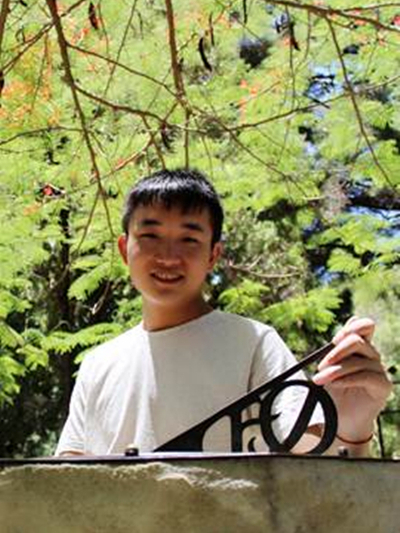人物經歷
2017年畢業於
西北工業大學航海學院,獲工學博士學位。曾在西澳大利亞大學數學與統計學院聯合培養兩年,擔任《Physica A》、《Chaos》、《EPL》、《Scientific Reports》等SCI期刊審稿人。
工作經歷:
2017年12月-2018年4月 西安郵電大學計算機學院講師(副教授津貼)
2018年4月-2021年3月 南京大學新聞傳播學院計算傳播學實驗中心助理研究員
2021年3月至今 南京大學新聞傳播學院計算傳播學實驗中心副教授
研究領域
複雜網路;線上社交網路;網路信息傳播
學術成果
主持項目:
2019.01–2021.12 國家自然科學基金青年項目:“基於鏈路預測和零模型的演化網路結構分析”(61803047)(主持人)
Analysis of evolving network structure based on link prediction and null models National Natural Science Foundation of China 61803047
2019.01-2019.12 騰訊-南京大學-中國新聞史學會計算傳播學研究委員會網際網路傳播學項目:“演化社交網路上的傳播路徑預測”(主持人)
主要參與項目:
國家社科基金重大項目(計算社會學)“大數據驅動的網路社會心態發展規律與引導策略研究” 陳雲松教授主持
國家社科基金重大項目(計算傳播學)“大數據時代計算傳播學的理論、方法與套用研究” 巢乃鵬教授主持
2014.01–2017.12
國家自然科學基金項目:“雙層耦合社交網路的相互作用和共演化機制:基於時間序列和鏈路預測的方法”(61374170)(參與人員);
2012.01–2014.12國家青年自然科學基金項目:“基於子圖結構和功能的複雜網路鏈路預測研究”(61004104)(參與人員);
2013.10 –2014.10 騰訊高校項目:“CCF-騰訊犀牛鳥科研基金”(AGR20130112)(參與人員)。
發表論文:
主要期刊論文:
美國物理學會:
Ke-ke Shang*, and Michael Small. Link prediction for long-circle-like networks. Physical Review E 105.2 (2022): 024311. SCI Q1、一作兼通訊
美國物理聯合會:
Ke-ke Shang*, et al. “Growing networks with communities: A distributive link model.” Chaos: An Interdisciplinary Journal of Nonlinear Science 30 (2020): 041101. SCI Q1、一作兼通訊,被引超30次
Ke-ke Shang*, et al. “Link prediction for tree-like networks.” Chaos: An Interdisciplinary Journal of Nonlinear Science 29.6 (2019): 061103. SCI Q1、一作兼通訊,被引超40次
歐洲物理學會:
Ke-ke Shang*, et al. “A novel metric for community detection.” EPL (Europhysics Letters), 129 (2020): 68002. SCI、一作兼通訊
Ke-ke Shang*, et al. “The key to the weak-ties phenomenon.” EPL (Europhysics Letters), 127(2019): 48002. SCI 、一作兼通訊
Ke-ke Shang*, et al. “The role of direct links for link prediction in evolving networks.” EPL (Europhysics Letters), 117 (2017) 28002. SCI、一作兼通訊
英國物理學會:
Ran, Y*., Liu, S. Y., Yu, X., SHANG, K.*, & Jia, T*. (2022). Predicting future links with new nodes in temporal academic networks. Journal of Physics: Complexity. 共同通訊、邀稿
中國科學院(CAS):
Bin Yang*, Ke-ke Shang*, Michael Small*, Naipeng Chao*.(2023) Information overload: How hot topics distract from news---COVID-19 spread in the US, National Science Open 《國家科學進展》, 20220051. 共同通訊
其它期刊論文:
Ke-ke Shang, Wei-sheng Yan, and Michael Small*. “Evolving networks—Using past structure to predict the future.”Physica A: Statistical Mechanics and its Applications 455 (2016): 120-135. SCI Q1 一作
Chen, S., Ran, Y., Huang, H.*, Wang, Z.*, & Shang, K. K.* (2022). Epidemic Dynamics of Two-Pathogen Spreading for Pairwise Models. Mathematics, 10(11), 1906. SCI Q1 共同通訊
Ye, N., Yu, D.*, Zhou, Y., Shang, K. K.*, & Zhang, S. (2023). Graph Convolutional-Based Deep Residual Modeling for Rumor Detection on Social Media. Mathematics, 11(15), 3393. SCI Q1 共同通訊
Zhang, Y., Feng, M., Shang, K. K.*, Ran, Y., & Wang, C. J.* (2022). Peeking strategy for online news diffusion prediction via machine learning. Physica A: Statistical Mechanics and its Applications, 598, 127357. SCI Q2 共同通訊
Zhang, Chuanting, Ke-Ke Shang*, and Jingping Qiao*. Adaptive Similarity Function with Structural Features of Network Embedding for Missing Link Prediction. Complexity2021 (2021). SCI Q2 共同通訊
Ke-ke Shang*, Michael Small, and Wei-sheng Yan. “Fitness networks for real world systems via modified preferential attachment.” Physica A: Statistical Mechanics and its Applications, 474 (2017): 49-60. SCI Q2 一作兼通訊
Ke-ke Shang*, Michael Small and Wei-sheng Yan. “Link direction for link prediction.” Physica A: Statistical Mechanics and its Applications 469 (2017) 767–776. SCI Q2 一作兼通訊
Ke-Ke Shang, Wei-Sheng Yan, and Xiao-Ke Xu*. “Limitation of degree information for analyzing the interaction evolution in online social networks.” International Journal of Modern Physics C 25.10 (2014): 1450056. SCI Q3 一作
Liu, L., Chen, S., Small, M., Moore, J. M., & Shang, K. (2023). Global stability and optimal control of epidemics in heterogeneously structured populations exhibiting adaptive behaviour. Communications in Nonlinear Science and Numerical Simulation, 107500. SCI Q1
Xu, Xiao-Ke, Ke-Ke Shang, and Jing Xiao. Quantifying the effect of community structures for link prediction by constructing null models. IEEE Access 8 (2020): 89269-89280. SCI Q1
Huang, J., Xu, R., Cheng, D., Zhang, S., & Shang, K. (2019). A novel hybrid clustering algorithm based on minimum spanning tree of natural core points. IEEE Access, 7, 43707-43720. SCI Q1
Cui, W. K., Shang, K. K., Zhang, Y. J., Xiao, J., & Xu, X. K. (2018). Constructing null networks for community detection in complex networks. The European Physical Journal B, 91(7), 1-9. SCI Q3
尚可可, 許小可. 基於置亂算法的複雜網路零模型構造及其套用 [J]. 電子科技大學學報, 2014, 43(1): 7-20. EI、CSCD一作
許小可,崔文闊、崔麗艷、肖婧、尚可可. 無權網路零模型的構造及套用[J]. 電子科技大學學報, 2019, 48(1): 122-141. EI、CSCD
姚尊強, 尚可可, 許小可. 加權網路的常用統計量 [J]. 上海理工大學學報 34.1 (2012): 18-26. 中文核心、CSCD

